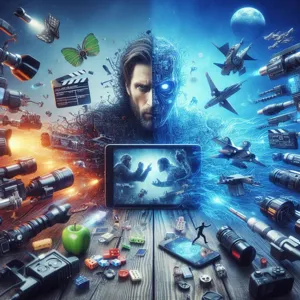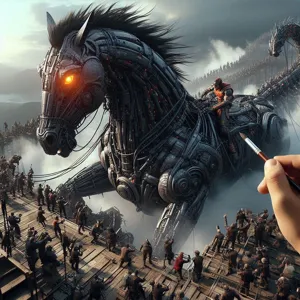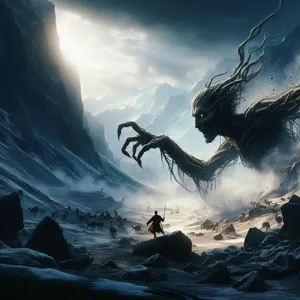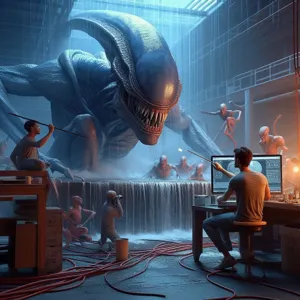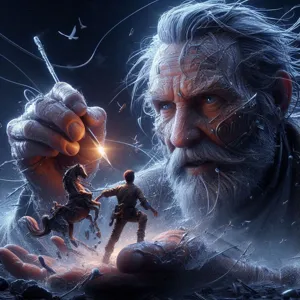In an era where digital engagement is paramount, the intersection of social media and sports has never been more pronounced, particularly in the world of soccer.
With millions of fans worldwide, platforms like Twitter, Instagram, and TikTok are not just venues for sharing highlights and scores; they are dynamic arenas where influence is forged and rivalries are ignited. This blog post delves into the transformative role social media plays in shaping the future of soccer, exploring how it amplifies fan voices, enhances player branding, and redefines how clubs engage with their supporters. From viral moments that capture the essence of the game to the rise of social media influencers who can sway public opinion, we will examine how these digital channels are not just enhancing the sport but are increasingly becoming the heartbeat of the beautiful game itself. Join us as we unravel the intricate tapestry of influence woven through the social media landscape and its profound implications for soccer’s future.
1. Introduction: The Rise of Social Media in Sports
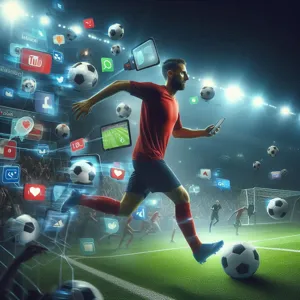
In recent years, the landscape of sports has undergone a seismic shift, largely driven by the pervasive influence of social media. Gone are the days when fans relied solely on television broadcasts and newspaper headlines to stay connected with their favorite teams and athletes. Today, platforms like Twitter, Instagram, TikTok, and Facebook have transformed the way we engage with sports, offering a direct line of communication between fans and their idols. This digital revolution has not only changed how information is disseminated but has also redefined the very nature of fandom.
The rise of social media in sports has created a dynamic ecosystem where players can showcase their personalities beyond the pitch, share behind-the-scenes glimpses of their lives, and engage with fans on a personal level. With millions of followers, athletes have become influencers, wielding the power to shape opinions, drive trends, and even impact the financial aspects of the sport. This new wave of engagement fosters a sense of community among fans, allowing them to interact with one another and participate in discussions that extend far beyond the final whistle.
Moreover, social media has become a critical tool for clubs and organizations, enabling them to build their brands and connect with their audience in innovative ways. From engaging content and interactive campaigns to real-time updates and live streaming of events, the opportunities for soccer clubs to enhance their reach and foster loyalty are limitless. The influence of social media in sports is not just a passing trend; it represents a fundamental shift that continues to shape the future of soccer, creating a more inclusive, interactive, and vibrant ecosystem for all involved.
As we explore the myriad ways social media is influencing the beautiful game, it becomes clear that its impact is profound, shaping not only how we consume soccer but also how we connect with it on a deeper level. whether it’s through viral moments, fan-generated content, or athlete activism, social media is redefining the very essence of what it means to be a soccer fan in the modern age.
2. The Evolution of Soccer in the Digital Age
The evolution of soccer in the digital age is nothing short of transformative, reshaping not only how the game is played but also how it is consumed and perceived worldwide. Gone are the days when fans relied solely on television broadcasts or match reports in newspapers to stay connected with their favorite teams and players. Today, the digital landscape has become a vibrant, interactive playground where every kick, every goal, and every moment of drama can be shared, commented on, and celebrated instantaneously.
Social media platforms like Twitter, Instagram, TikTok, and Facebook have revolutionized fan engagement, allowing clubs and players to communicate directly with their audiences. A single tweet or post can spark conversations that echo across the globe, creating a sense of community among fans who might never meet in person. Clubs now have the power to cultivate their brand, share behind-the-scenes content, and engage with supporters in real-time, making fans feel like they are part of the action, whether they are in the stadium or halfway around the world.
Moreover, the digital age has also opened doors for younger generations who are increasingly interested in soccer. For them, highlights are just a click away, and they can follow their idols through every step of their careers, from youth leagues to international stardom. The accessibility of information and the immediacy of social media have allowed for a new kind of fandom—one that thrives on instant gratification and continuous interaction.
The influence of social media extends beyond just fans; it has also changed the landscape for players and coaches. Athletes are now brand ambassadors in their own right, with millions of followers who look to them for inspiration, fashion, and lifestyle choices. Their online presence can significantly impact their marketability, endorsements, and even their performance on the field. Coaches and clubs are also leveraging analytics from social media interactions to gauge fan sentiments, adapting their strategies to enhance engagement and loyalty.
As we move further into this digital era, the evolution of soccer continues to unfold in dynamic ways. The game is no longer just about what happens on the pitch; it’s about creating narratives, forging connections, and building a global community united by their love for soccer. The future is bright, and the influence of social media will only grow stronger, ensuring that the beautiful game remains at the forefront of cultural conversations worldwide.
3. Understanding Influence: What Does It Mean in Soccer?

Understanding influence in the realm of soccer is crucial to grasping how social media is reshaping the landscape of the sport. At its core, influence refers to the capacity of individuals, teams, or brands to sway opinions, behaviors, and emotions within the soccer community. In a sport where passion and loyalty run deep, the power of influence can be monumental, driving fan engagement, shaping narratives, and even impacting player careers.
In soccer, influence manifests in various forms. Take, for instance, the role of star players who, with a single tweet or Instagram post, can ignite discussions, inspire movements, or even spur merchandise sales. When a global icon shares their thoughts on a match or advocates for a social cause, their followers—and the broader fanbase—are likely to respond, often leading to a ripple effect across numerous platforms.
Moreover, clubs themselves harness social media to cultivate their identity and connect with fans on a personal level. By sharing behind-the-scenes content, player interviews, and match highlights, teams not only maintain visibility but also create a sense of community. This direct line of communication fosters loyalty, as fans feel more involved and invested in their team’s journey.
In a world increasingly defined by digital interaction, influencers—be they athletes, coaches, or pundits—are redefining traditional boundaries. They have the ability to create narratives that resonate with millions, making them key players in the soccer ecosystem. Understanding this influence is vital for fans, clubs, and marketers alike, as it holds the potential to shape not just the future of soccer, but the very culture surrounding it.
4. Key Players: Influencers and Their Impact on the Game
In the evolving landscape of soccer, influencers have emerged as powerful catalysts, shaping not only how the game is perceived but also how it is played and consumed. These key players, ranging from former athletes to social media stars, wield significant influence over fans and aspiring professionals alike, creating a dynamic interplay between personal branding and the sport itself.
Influencers like Neymar Jr. and Cristiano Ronaldo, who have amassed millions of followers on platforms such as Instagram and TikTok, are not just athletes; they are global icons. Their posts—be it a behind-the-scenes look at their training regimen, glimpses into their lavish lifestyles, or even casual interactions with fans—have the potential to create immediate buzz and resonate deeply with audiences. When they endorse products, share training tips, or even express their opinions on match performances, their words carry weight and can sway public perception in an instant.
Moreover, micro-influencers, often those with smaller but highly engaged followings, are also making waves in the soccer community. They provide authentic content that resonates with niche audiences, creating a sense of community among fans who share their passion for the game. These influencers often highlight local clubs, grassroots initiatives, or up-and-coming talent, thus fostering a connection between the sport and its broader community.
The impact of influencers goes beyond mere visibility; they are reshaping the business side of soccer as well. Sponsorship deals, merchandise sales, and even ticket sales can all be influenced by an athlete’s online presence. Brands are increasingly turning to these influencers for partnerships, understanding that their reach and authenticity can effectively drive consumer engagement and loyalty.
As social media continues to evolve, the role of influencers in soccer will likely expand, further intertwining the digital realm with the physicality of the sport. Their ability to connect with fans on a personal level not only cultivates a deeper appreciation for the game but also ignites conversations that can lead to transformative changes within the soccer community. In this new era, the goal of influence is clear: to bridge the gap between players and fans, making the beautiful game more accessible and engaging than ever before.
5. How Social Media Platforms are Transforming Fan Engagement

Social media platforms have revolutionized the way fans engage with soccer, creating a vibrant digital ecosystem where passion for the sport can flourish. No longer confined to the stadium or traditional media broadcasts, fans now enjoy a front-row seat to their favorite teams and players, regardless of their geographical location. This transformation is driven by the immersive nature of platforms like Instagram, Twitter, TikTok, and Facebook, which offer unique avenues for interaction.
Imagine being able to follow your favorite player’s journey in real-time through behind-the-scenes training clips, personal anecdotes, and candid moments shared directly by the athletes themselves. Social media brings fans closer than ever, bridging the gap between them and the stars they admire. It allows for a two-way conversation; not only can fans comment on posts, but they can also share their thoughts, feedback, and even participate in polls and Q&A sessions. This democratization of interaction fosters a sense of community, where fans feel valued and heard.
Moreover, social media is a powerful tool for clubs, enabling them to cultivate a dedicated fanbase by engaging in creative storytelling. Clubs can share compelling content, from match highlights and player interviews to fan-generated content, creating a rich tapestry of experiences that resonate with followers. Initiatives like live chats, virtual meet-and-greets, and exclusive insider content further enhance the connection between clubs and their supporters.
The impact of social media extends beyond engagement; it also influences purchasing decisions. With the rise of social media marketing, fans are often exposed to merchandise and promotional campaigns tailored to their interests. Influencers and brand ambassadors play a critical role in this landscape, as they leverage their platforms to endorse products, creating a sense of authenticity that resonates with fans.
As social media continues to evolve, its influence on the soccer world will only grow stronger. The future of fan engagement lies in the innovative use of these platforms, where clubs and fans alike can forge deeper, more meaningful connections. In this digital age, the beautiful game is not just played on the pitch; it thrives in the hearts and minds of fans navigating the vast world of social media.
6. The Role of Content Creation in Building a Soccer Brand
In the competitive landscape of soccer, content creation has emerged as a pivotal element in building and sustaining a soccer brand. With the power of social media at our fingertips, clubs, players, and influencers can craft compelling narratives that resonate with fans around the globe. This isn’t just about posting match highlights or player stats; it’s about creating a rich tapestry of stories that engage and inspire.
Effective content creation goes beyond mere promotion—it invites fans into the heart of the game. Behind-the-scenes glimpses of training sessions, player interviews, and personal stories foster a sense of connection that transcends geographical boundaries. For instance, a short video showcasing a player’s journey, from humble beginnings to professional stardom, can evoke empathy and admiration, making fans feel personally invested in their success.
Moreover, clubs that prioritize authentic storytelling can cultivate a loyal community. Engaging content encourages interaction, whether through comments, shares, or fan-generated posts, transforming passive viewers into active participants. This sense of belonging is especially crucial in today’s digital age, where fans seek deeper connections with their favorite teams.
Visual content—vibrant images and captivating videos—plays a significant role in this strategy. Platforms like Instagram and TikTok thrive on eye-catching visuals, allowing clubs to showcase their unique identity and culture. For example, a well-produced highlight reel set to an inspiring soundtrack can capture the excitement of a match day, enticing fans to share their own experiences and memories.
Moreover, the role of influencers in content creation cannot be overlooked. Collaborating with prominent figures in the soccer world—whether they are current players, retired legends, or popular commentators—can amplify a brand’s reach and credibility. Their endorsement or participation in content can draw in new fans and reinforce loyalty among existing supporters.
In essence, content creation is the lifeblood of modern soccer branding. It shapes perceptions, builds community, and enhances the overall fan experience. As social media continues to evolve, the clubs, players, and brands that master the art of storytelling will undoubtedly thrive in the ever-changing landscape of the beautiful game.
7. Case Studies: Successful Soccer Influencers and Their Strategies

In the ever-evolving landscape of soccer, a new breed of influencers has emerged, wielding significant power over fan engagement and brand partnerships. These individuals have not only transformed their personal brands but have also redefined how clubs, players, and sponsors interact with the global soccer community. Let’s delve into some compelling case studies of successful soccer influencers and the strategies that propelled them to prominence.
One standout figure is **Cristiano Ronaldo**, whose social media presence has redefined the concept of a sports influencer. With over 500 million followers on Instagram alone, Ronaldo does more than just share highlights from his matches; he provides a glimpse into his personal life, training regimen, and philanthropic endeavors. His strategy hinges on authenticity and relatability, as he often shares behind-the-scenes moments that resonate with fans. Brands clamoring for exposure recognize his unparalleled reach and the authenticity he brings to endorsements, resulting in lucrative partnerships that benefit both parties.
Another influential figure is **Kylian Mbappé**, who has adeptly harnessed the power of social media to connect with younger audiences. His strategy involves leveraging trending topics, memes, and challenges to engage fans in a playful manner. Mbappé’s use of TikTok, where he participates in viral challenges and interacts directly with fans, has made him a beloved figure among Gen Z soccer enthusiasts. This not only boosts his personal brand but also enhances the visibility of his club, Paris Saint-Germain, helping to cultivate a passionate fan base.
On the grassroots level, influencers like **Megan Rapinoe** showcase how social media can amplify social causes alongside sports. By using her platform to advocate for equality and LGBTQ+ rights, Rapinoe has built a loyal following that appreciates her commitment to activism. This dual focus on sports and social impact has attracted brands that align with her values, leading to partnerships that go beyond mere promotion and foster meaningful conversations within the soccer community.
Lastly, consider the success of **F2Freestylers**, a duo known for their incredible soccer skills and entertaining content. Their engaging videos combine technical prowess with humor, making soccer accessible and fun for fans of all ages. By consistently producing high-quality, entertaining content on platforms like YouTube, they have attracted millions of subscribers and collaborated with top brands in the sports industry. Their strategy emphasizes the importance of creativity and consistent engagement, proving that influencers can effectively bridge the gap between professional sports and everyday fans.
These case studies illuminate the diverse strategies employed by successful soccer influencers, each tailored to their unique audience and brand identity. As soccer continues to evolve in the digital age, the influence of these individuals will only grow, shaping the future of the sport and how it engages with fans worldwide.
8. The Impact of Social Media on Player Transfers and Contracts
In the rapidly evolving landscape of soccer, social media has emerged as a game-changer, significantly influencing player transfers and contract negotiations. Gone are the days when deals were finalized behind closed doors, shrouded in secrecy. Today, the process is as transparent as it is dynamic, with Twitter, Instagram, and TikTok serving as pivotal platforms for communication and negotiation.
Social media has democratized information, allowing fans, clubs, and agents to share insights and rumors in real-time. A single tweet can spark a frenzy of speculation, igniting conversations across the globe about a player’s potential transfer. Clubs now actively monitor social media trends to gauge fan reactions and assess the market value of their players. This instant feedback loop ensures that no decision is made in isolation; the digital pulse of the community plays an integral role in shaping a player’s journey.
Moreover, players themselves are becoming increasingly savvy about their social media presence. Many athletes use their platforms not only to connect with fans but also to enhance their marketability. A well-timed post can elevate a player’s profile, making them a more attractive prospect for clubs looking to capitalize on both talent and brand appeal. This shift has led to a new era where social media presence is factored into contract negotiations, with clubs considering a player’s online following as part of their potential value.
Additionally, the viral nature of social media means that transfer news can spread like wildfire, often leading to swift decisions from clubs eager to secure a player before their value skyrockets or before rival clubs swoop in. This urgency can put pressure on players and clubs alike, sometimes resulting in last-minute decisions that could alter the careers of players forever.
In essence, social media has not only transformed how fans engage with the sport but has also redefined the mechanics of player transfers and contracts. As we look to the future, it is clear that the influence of social media will continue to shape the soccer landscape in profound and unpredictable ways, ushering in a new era of connectivity and influence that transcends the pitch.
9. Analyzing the Relationship Between Clubs and Their Online Presence
In today’s digital age, the relationship between soccer clubs and their online presence is increasingly intricate and vital. Clubs are no longer just institutions that play matches; they are brands that engage with millions of fans around the globe through social media platforms, websites, and digital content. This shift has transformed how clubs communicate, market, and foster loyalty among their supporters.
Analyzing this relationship involves looking at how clubs curate their online personas. For instance, clubs like FC Barcelona and Manchester United have mastered the art of storytelling, sharing behind-the-scenes glimpses of player training, community initiatives, and personal stories that resonate on a human level. This strategy not only captivates existing fans but also attracts new ones, particularly younger audiences who crave authenticity and connection.
Moreover, the engagement metrics tell a compelling story. Clubs that actively respond to fan inquiries, host live Q&A sessions with players, or run interactive polls experience higher levels of engagement and loyalty. For example, when a club shares real-time match updates or behind-the-scenes footage, it creates a sense of inclusion among fans, making them feel like they are part of the team’s journey.
The impact of this relationship is further amplified by data analytics. Clubs can now track which types of content generate the most engagement and adjust their strategies accordingly. This means that a video of a player’s incredible goal might go viral, leading clubs to produce more similar content. Conversely, they can identify less successful posts and pivot away from those narratives.
In this rapidly evolving landscape, the clubs that prioritize a robust online presence are not just fostering a loyal fan base; they are also paving the way for future revenue streams. From merchandise sales to sponsorship opportunities, the digital footprint of a club is intertwined with its financial health. As soccer continues to embrace the digital revolution, the relationship between clubs and their online presence will undoubtedly shape the future of the sport, influencing everything from fan engagement to global reach.
10. The Future of Soccer Marketing: Trends and Predictions
As we look toward the horizon of soccer marketing, it’s clear that the landscape is evolving at an unprecedented pace, largely driven by the influence of social media. Brands, teams, and players are increasingly recognizing that their engagement with fans extends far beyond the pitch. The future will see a blend of innovative strategies and technology that will redefine how the beautiful game is marketed.
One significant trend is the rise of personalized content. With the wealth of data available on social media platforms, clubs can tailor their marketing efforts to meet the specific interests and behaviors of their fans. From customized merchandise to exclusive behind-the-scenes content, the ability to deliver highly relevant messages will deepen the connection between teams and their supporters. Imagine receiving a notification about a limited-edition jersey drop featuring your favorite player or exclusive access to a Q&A session with the coach—this level of personalization will not only enhance fan engagement but also drive sales.
Furthermore, the integration of augmented reality (AR) and virtual reality (VR) into marketing strategies is set to revolutionize fan experiences. Picture this: a fan donning a VR headset could virtually attend a live match from the comfort of their home, experiencing the excitement as if they were in the stadium. Marketing campaigns that utilize AR to allow fans to “try on” merchandise or engage with interactive features during games will become more prevalent, offering immersive experiences that capture attention and foster loyalty.
Social media influencers will continue to play a pivotal role in soccer marketing. As players and clubs tap into the reach of influencers, the authenticity they bring can amplify a brand’s message significantly. Collaborations with popular figures—whether they’re athletes, lifestyle influencers, or content creators—can help clubs reach diverse audiences and enhance their cultural relevance, especially among younger fans.
Finally, sustainability and social responsibility are likely to take center stage in marketing narratives. As fans become increasingly conscious of environmental and social issues, clubs will need to align their branding efforts with these values. Initiatives like eco-friendly merchandise, community engagement programs, and partnerships with charitable organizations will resonate with supporters, fostering a deeper emotional connection.
In summary, the future of soccer marketing is poised for transformation, with personalized experiences, technological advancements, influencer partnerships, and a commitment to social responsibility leading the charge. As these trends unfold, they will not only shape the way clubs connect with their fans but also redefine the very essence of what it means to be part of the soccer community in the digital age.
11. Challenges and Pitfalls of Social Media in Soccer
While social media has undeniably transformed the landscape of soccer, it is not without its challenges and pitfalls. The very platforms that empower clubs, players, and fans to engage in real-time dialogue can also serve as double-edged swords, often leading to unintended consequences.
One of the most significant challenges is the rapid spread of misinformation. With the ease of posting and sharing, rumors about player transfers, injuries, or managerial changes can circulate widely before they are verified, causing confusion and unrest among fans. This can lead to a frenzy of speculation that not only disrupts the club’s narrative but can also affect player morale and performance on the field.
Moreover, the pressure on players to maintain a polished online persona is immense. The constant scrutiny of social media can lead to mental health issues, as athletes are bombarded with both adoring fans and harsh critics. Negative comments and trolling can take a toll, making it challenging for players to focus solely on their game. The blurred lines between personal and professional life can also lead to missteps, where a single poorly thought-out post can spark controversy and damage reputations.
Additionally, clubs face the daunting task of managing their online presence. As they strive to connect with a global audience, the risk of alienating local fans or misrepresenting their brand identity grows. A misaligned social media strategy can result in backlash, as fans expect authenticity and transparency from their beloved teams.
Lastly, the commercialization of soccer through social media can sometimes overshadow the sport itself. As clubs chase engagement metrics and follower counts, there is a risk of prioritizing marketing over the game, leading to a disconnect between the sport and its true essence. Balancing engagement with genuine passion for the game remains a critical challenge in this evolving digital landscape.
In navigating these challenges, clubs and players can leverage the power of social media while remaining mindful of its potential pitfalls, ensuring that the beautiful game continues to thrive in the digital age.
12. How Social Media is Shaping Youth Soccer Development
In the ever-evolving landscape of youth soccer development, social media has emerged as a powerful catalyst for change, shaping the way young athletes learn, train, and connect with the sport. Platforms like Instagram, TikTok, and YouTube are no longer just venues for sharing highlight reels; they are essential tools that influence coaching methods, player exposure, and the overall culture surrounding youth soccer.
One of the most significant impacts of social media is the democratization of knowledge. Aspiring young players now have access to a wealth of training resources at their fingertips. Coaches and professional players frequently share drills, techniques, and fitness routines through engaging videos and tutorials. This instant access empowers young athletes to take charge of their development, allowing them to practice skills and strategies independently. The ability to learn from the best—whether it’s a local coach or a renowned soccer star—encourages a generation of players to hone their craft more effectively and creatively.
Moreover, social media has transformed the way talent is scouted. Clubs and academies are increasingly turning to these platforms to discover new talent. Young players showcase their skills through clips and highlights, giving them the opportunity to reach a global audience. This has made it possible for talented individuals from diverse backgrounds and locations to gain recognition, often leading to opportunities that may have previously been unavailable to them.
Additionally, social media fosters community and connection among young players. Online groups and forums allow athletes to share experiences, seek advice, and build friendships with peers who share their passion for soccer. This sense of belonging can be instrumental in keeping young players engaged and motivated, particularly during challenging times in their development.
However, it’s important to approach this digital landscape with caution. The allure of social media can sometimes lead to unhealthy comparisons and pressure to perform. Coaches and parents must guide young players in using social media positively, emphasizing the importance of mental well-being alongside their athletic pursuits.
In conclusion, social media is not just a trend; it is a pivotal force shaping the future of youth soccer development. By providing access to knowledge, creating new pathways for talent discovery, and fostering community, it empowers the next generation of players to thrive both on and off the field. As this digital influence continues to grow, it will undoubtedly redefine the way young athletes experience and develop within the beautiful game.
13. The Global Reach of Soccer through Digital Platforms
In today’s interconnected world, the global reach of soccer has transcended borders, and digital platforms are at the forefront of this transformation. Gone are the days when fans had to rely solely on television broadcasts or local radio stations to follow their favorite teams; social media and online streaming services have revolutionized how the beautiful game is consumed.
Platforms like Instagram, Twitter, Facebook, and TikTok allow fans to engage with soccer in real-time, connecting them directly with players, clubs, and fellow enthusiasts from all corners of the globe. A single tweet from a superstar athlete can generate millions of interactions, creating an instantaneous dialogue that transcends language barriers and cultural divides. With just a few taps on their smartphones, fans can access highlights, behind-the-scenes content, and live commentary, making them feel like they are part of the action, regardless of their geographic location.
Moreover, digital platforms have democratized the sport, allowing smaller leagues and lesser-known teams to showcase their talent to a worldwide audience. A local match streamed live on social media can attract viewers from countries thousands of miles away, fostering a sense of community and shared passion among diverse fan bases. This newfound visibility not only elevates the profile of these clubs but also opens up avenues for sponsorship and partnerships that were previously out of reach.
In addition, soccer influencers and content creators have emerged as key players in this digital landscape. They curate compelling content, share unique insights, and spark discussions that captivate audiences. Their influence can sway opinions, drive merchandise sales, and even affect player transfers, highlighting the profound impact social media has on the sport’s ecosystem.
As we move further into the digital age, the global reach of soccer through these platforms will only continue to expand. With innovations like virtual reality experiences and interactive fan engagement tools on the horizon, the way we experience and connect with soccer is poised for an exhilarating evolution, shaping the future of the game as we know it.
14. Ethical Considerations: Navigating Influence and Responsibility
As the power of social media continues to surge, the intersection of influence and responsibility in soccer becomes increasingly complex. With millions of followers hanging on every post, players, teams, and influencers wield significant power in shaping public opinion and fan culture. However, this influence comes with a weighty ethical obligation to consider not just how messages are conveyed, but also the impact they have on diverse audiences.
In an age where misinformation can spread like wildfire, ethical considerations become paramount. Influencers and players must navigate the fine line between promoting their brands and ensuring they are not inadvertently endorsing harmful behaviors or perpetuating stereotypes. For instance, when a star athlete shares a sponsored product, the implications of that endorsement can extend beyond mere consumerism; it can shape attitudes towards health, lifestyle, and even social issues.
Moreover, the responsibility to foster a positive environment cannot be overstated. With issues such as racism and sexism perpetually surfacing within the sport, influencers and teams must use their platforms to advocate for change, rather than remain silent. Social media offers a powerful avenue to raise awareness, initiate conversations, and influence systemic changes in the sport’s culture.
Furthermore, transparency is a critical component of ethical influence. With fans increasingly savvy about the motives behind sponsored content, influencers must prioritize honesty in their endorsements. This not only builds trust with their audience but also ensures the integrity of the sport is upheld.
Navigating this landscape of influence and responsibility is not easy, but it is essential for the future of soccer. By leveraging their platforms with integrity and thoughtfulness, athletes and influencers can foster a culture that not only celebrates the game but also promotes positive values and social responsibility. As the relationship between social media and soccer evolves, so too must the commitment to ethical influence, ensuring that the sport remains a beacon of unity, progress, and integrity.
15. Conclusion: The Lasting Impact of Social Media on the Future of Soccer
In conclusion, the impact of social media on the future of soccer is both profound and far-reaching. As we have explored throughout this article, platforms like Twitter, Instagram, and TikTok have transformed how fans engage with the sport, how players build their brands, and how clubs connect with their audiences. The immediacy of social media allows for real-time updates, fostering a sense of community and engagement that traditional media could never achieve. Fans no longer passively consume content; they actively participate in discussions, share their opinions, and create viral moments that can shape narratives overnight.
Moreover, social media has democratized the influence within soccer. Players who may have been overshadowed by superstars can now cultivate their own followings, while grassroots movements gain traction and visibility, urging clubs to be more responsive to their fan bases. This shift in power dynamics fosters a more inclusive environment, where every voice matters, and every fan has the potential to influence the game.
As the sport continues to evolve, so too will the role of social media. With innovations like virtual reality experiences, augmented reality merchandise, and interactive live broadcasts on the horizon, the ways we experience soccer will become even more immersive and engaging. The future of soccer is not just about the game played on the pitch; it’s about the vibrant conversations, the shared moments, and the collective passion that social media fuels. As we move forward, it’s clear that the influence of social media will only grow, shaping the culture, economics, and community of soccer in ways we have yet to fully envision. In this digital age, one thing is certain: the beautiful game will be forever intertwined with the digital narratives crafted by its most passionate fans.
As we conclude our exploration of how social media is reshaping the future of soccer, it’s clear that the influence of digital platforms is more profound than ever. From enhancing fan engagement to transforming player branding, social media has become an integral part of the beautiful game, redefining how we connect with our favorite teams and players. As we move forward, the relationship between soccer and social media will only deepen, creating new opportunities for interaction and innovation. Whether you’re a fan, a player, or a coach, understanding this dynamic landscape is essential for navigating the future of the sport. So, as you log on to your favorite platforms, remember that every post, tweet, and share plays a part in shaping the soccer narrative of tomorrow. Embrace the influence, and be part of the conversation that continues to elevate this beloved game on a global stage.


